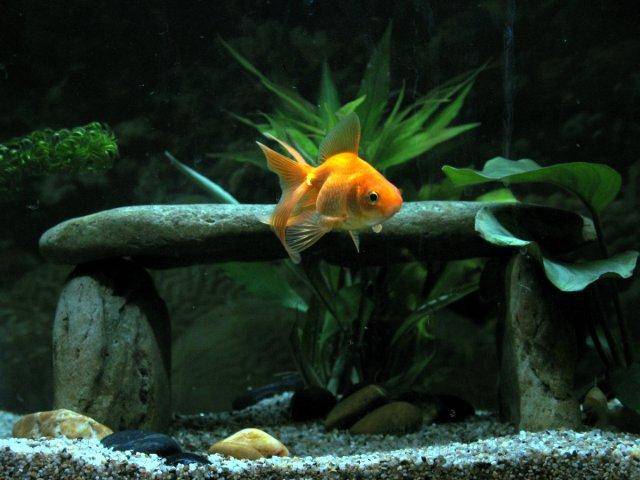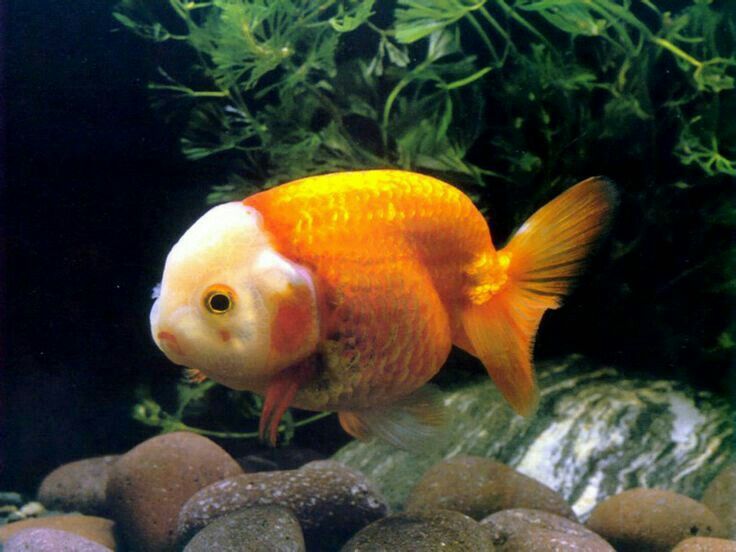
“Columnaris in Goldfish” isn’t just a term that sounds like it escaped a biology textbook—it’s the very real, stealthy antagonist hiding within the watery realms of your tank. Much like that plot twist you never saw coming in your favorite TV series, Flexibacter Columnaris catches both you and your scaly buddy off-guard.
Initially, its misdeeds might seem harmless, almost unnoticeable. But give it time, and this tiny terrorist showcases a performance so dramatic, it could win an Oscar! From subtle signs to full-blown fishy distress, things can escalate faster than popcorn disappears at a movie. And trust me, this is one show we want our goldfish to bow out of gracefully.
Flexibacter Columnaris: The Invisible Threat
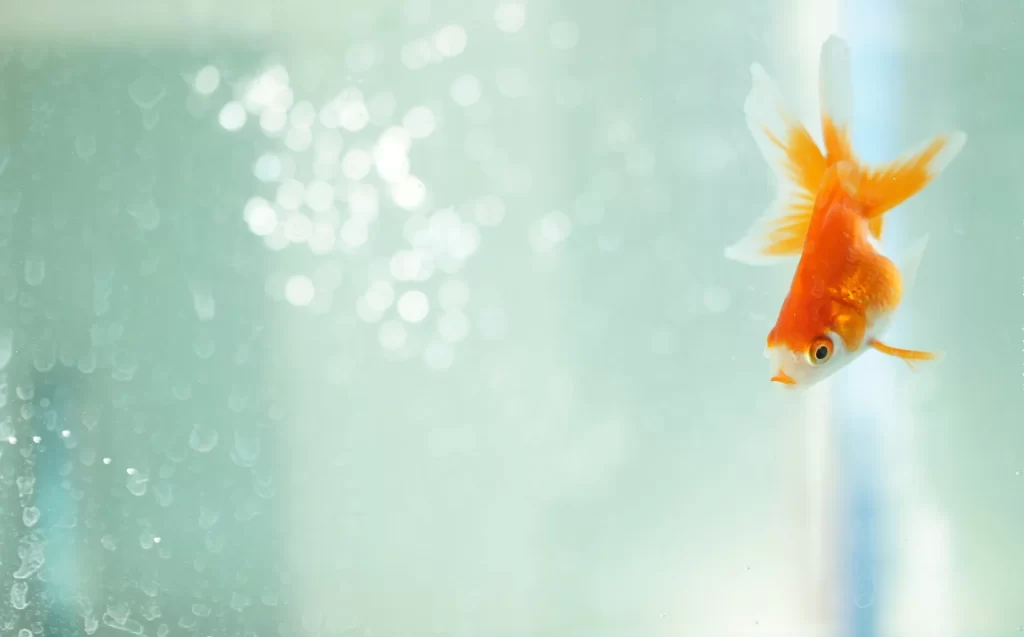
Flexibacter Columnaris – it sounds like a spell from Harry Potter, doesn’t it? But no whimsical magic here, folks. This disease is all too real a problem in the goldfish community.
Understanding of Columnaris in Goldfish
Flexibacter Columnaris, also simply known as “Columnaris,” is a real boogeyman for goldfish. It’s a types of bacteria that sets its sights on your finned friends. It shows up uninvited, with a naughty habit of sticking onto the gills, mouth, and skin of goldfish, causing ugly lesions. Think of it like that uninvited guest who not only drinks all your soda, but also brings a wrecking ball to your party.
The Impact It Has on Goldfish Health
Think of your goldfish like, well, a fish out of water when infected with Columnaris. They’ll start developing white patches or ulcers, akin to cotton wool stuck on them. A severe infection can cause gill damage and breathing trouble. Imagine running a marathon with a clogged nose – not fun at all! It’s even possible for our scaly friends to kick the bucket if not treated swiftly.
Pathogens are having a pool party and your goldfish is the unwilling host. Now that we know the nuisance we’re dealing with, it’s time we pivot to the telltale signs of this disease, and how you can identify it in the early stages. Stay with me as we dive a little deeper… pun intended.
Signs and Symptoms of Columnaris in Goldfish
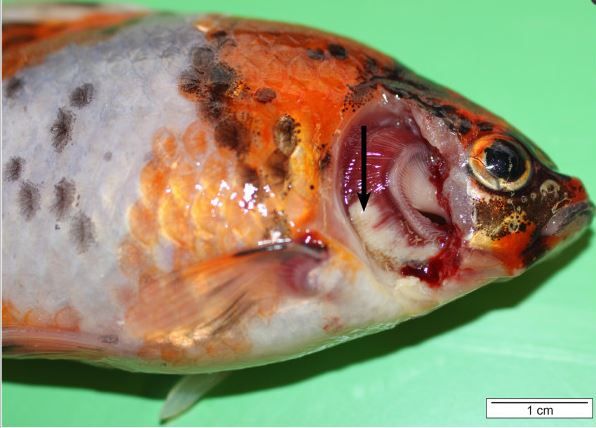
Do you ever feel like your goldfish is acting off, but you can’t quite put your finger on it? Observing your goldfish’s behaviour and physical health can be the difference between a sickly swimmer and a feisty finned friend.
Initial Signs of Infection
With our finned friends, it’s not as easy as them rolling over and saying, “Hey, human! I feel fishy.” So, we must be attuned to their silent SOS signals. Initial signs of Flexibacter Columnaris Disease may include erratic swimming or decreased appetite. These are as ‘red flaggy’ as a bull in a china shop – something isn’t right!
Other early signs can appear as cottony patches on their bodies. Picture your goldfish wearing a fluffy white coat – pretty noticeable, right?
The Progression of Disease Symptoms
Now, if the infection keeps playing its treasonous tricks, the signs can go from subtle to as glaring as a neon sign at a truck stop. Your goldfry may exhibit yellow-grey lesions or ulcers on the skin, especially around the mouth, it’s like they’ve tried to glam up and put on some ill-suited lipstick.
The gills may appear inflamed too, going from a subtle blush to an angry red. It’s like they’ve tried to do a flamingo impression, but it’s all gone horribly wrong.
Now that we’ve successfully played detective and discovered what’s amiss, it’s time to delve into the life of this aquatic party crasher. So, let’s brace ourselves and dive into the world of the Flexibacter Columnaris and how it throws a wrench into the easy swim of our pet goldfish.
The Great Goldfish Heist: Flexibacter Columnaris’ Sneaky Tactics
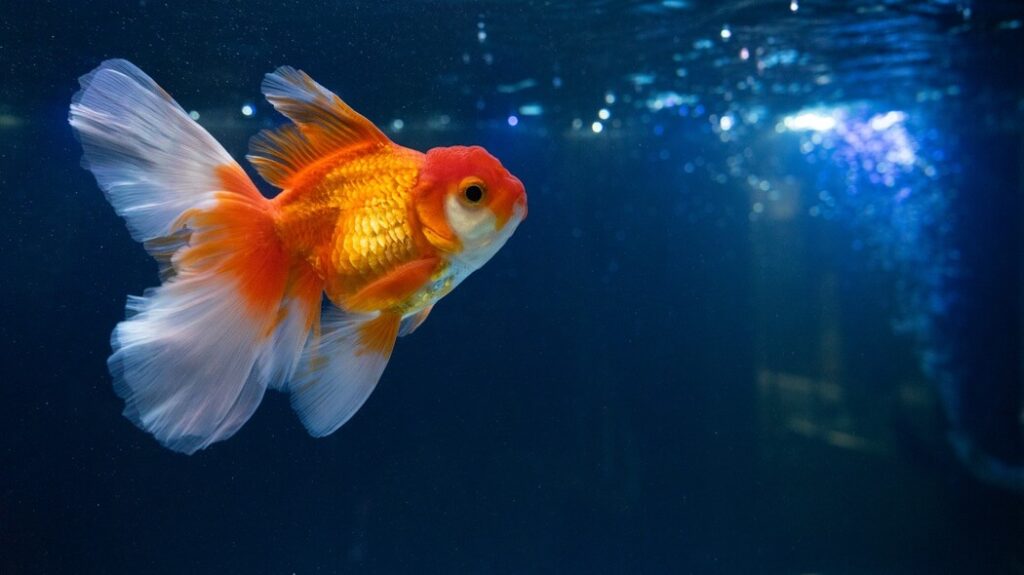
Ever wondered how a seemingly invisible pathogen can take down your robust, happy-go-lucky goldfish? It’s all about stealth, deception, and perfect timing. Let’s unravel the secret tactics of this underestimated enemy.
The Life and Times of Flexibacter Columnaris
Flexibacter Columnaris, a bacteria named after its flexible nature, duplicates like a teen at a pizza party, until it forms a horde large enough to cause serious mischief. Their lifecycle is short but aggressive. They cling onto any scrap or wound on your pet goldfish, waiting for a perfect moment like a ninja in stealth mode.
Once they find their golden opportunity (pun wholly intended), the bacteria colonize and spread, intensifying their impact on the fish’s otherwise cheerful life. By understanding their lifecycle, you stand a better chance of interrupting this malicious bacterium’s party plans.
The Evil Plan Unfolds: Spreading Havoc Inside
From the moment Flexibacter Columnaris secures a cozy spot on your fish, the real havoc begins. They infiltrate your goldfish’s body, spreading like gossip in a small town, causing widespread damage faster you can say ‘Goldie, no!’. What’s worse? They’re quite skilled at cloaking their actions until it’s arguably too late for our disoriented, innocent benefactors.
There you have it folks! The microscopic villainy that goes under your nose as you admire your glinting pet swim around nonchalantly. It’s like a twisted version of ‘Ocean’s Eleven’, only in miniature scale. Ready to gear up and step into action? Let’s dive into the nuts and bolts of getting your goldfish back on track, next.
What Makes Your Goldfish Susceptible
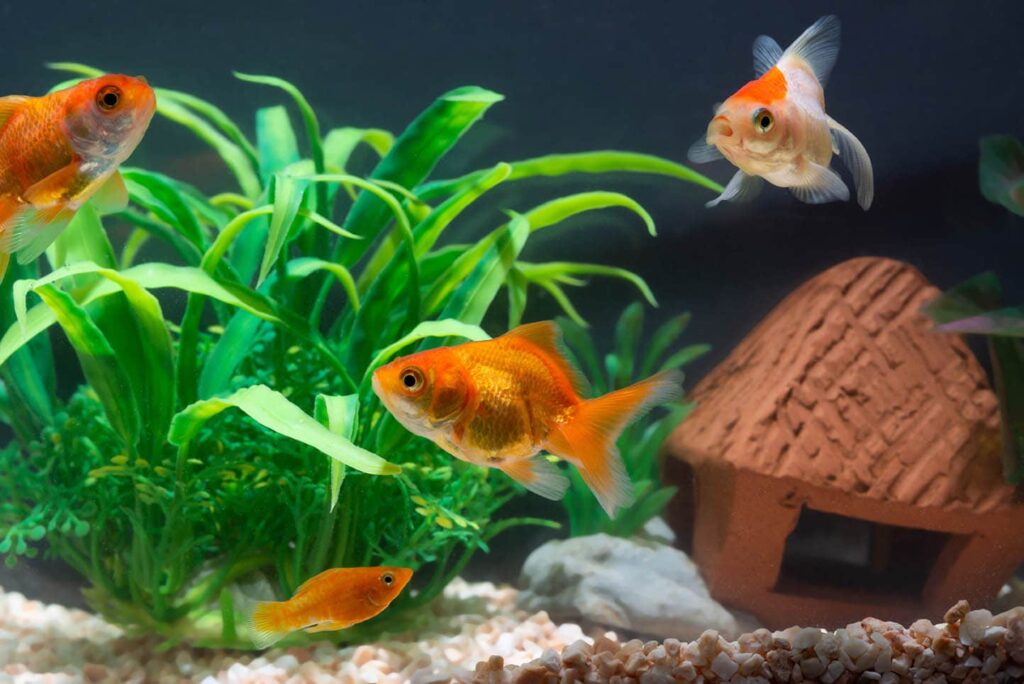
Ah, the million-dollar question! What makes our golden little swimmy friends prone to this sneaky Flexibacter Columnaris disease? Let’s dive in and get to the bottom of this murky tank secret, shall we?
Common Factors Contributing to Infection
It’s not that your goldfish have a red bulls-eye painted on their scales, begging for trouble. But several factors can make them an easy target for this unfriendly microbe. These may include overcrowded tanks, poor nutrition, frequent temperature changes, and inadequate tank cleaning. Yes, just like us humans not being fans of overcrowded trains and poor diet, goldfish aren’t either. More space and better food, please!
The Role of Water Quality and Stress
Imagine living in a home filled with smog, litter, and a broken heater. Stressful, right? Your goldfish feel the same way about their home (the tank). Not maintaining a healthy water quality is a one-way ticket to Stressville for your fish, and stress can lower their immune response, making them more susceptible to diseases like Flexibacter Columnaris. So let’s not be stingy – invest in a good filter and keep that water pristine!
Hang in there, dear reader! Up next, armed with this knowledge, let’s look at how best to battle and trounce this Flexibacter Columnaris once and for all. Onwards, to goldfish victory!
Treatment Tactics: Your Goldfish’s Best Shot At Survival
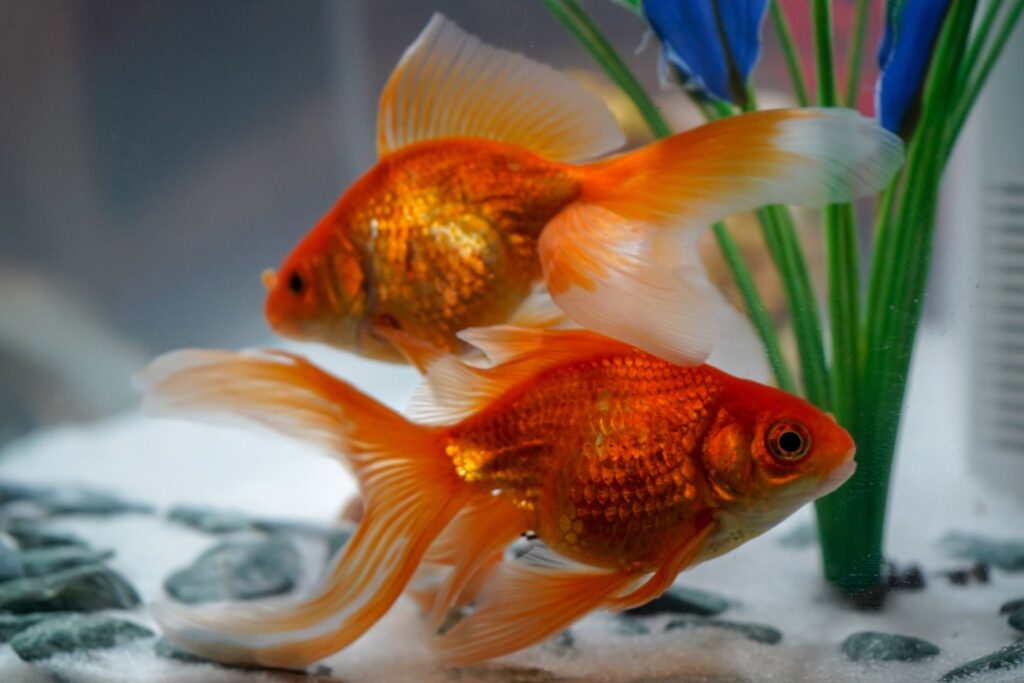
So, your once bubbly, cheerful goldfish is now under the weather. Well, don’t hit panic mode yet. With the right treatment, your scaled friend may bounce back healthier and livelier.
Popular and Effective Treatment of Columnaris in Goldfish
Let’s address the squishy fish in the tank here, there’s no one-size-fits-all treatment for Flexibacter Columnaris. Though, some methods have proven more effective. These include antibiotics like Kanamycin and potential lifesavers like Furan-2. Perhaps it’s time to spice up your medicine cabinet or your next pet supply store visit list? Before you take any action though, vet consultation is key. They’re like fish whisperers, or so.
The Role of Medication and Water Quality Control
Hold off the high-fives still, medication is just part of the victory. Consistent water quality control is a core part of your goldfish’s recovery journey. Think of your tank as a miniature ocean – water temperature, pH, and overall cleanliness matter. Avoid overcrowded tanks or sharing poorly cleaned accessories among fish. Feels like a whole new regime, huh?
With these measures in action, you’re well on your way to reclaiming the vibrant life of your goldfish. Next up, we’ll explore ways to smash the cycle of Flexibacter Columnaris, bar it from your tank poetry club. Nothing like a good offense for a defense, right? Keep swimming folks!
Post-Treatment Care: Ensuring a Full Recovery and No Relapse
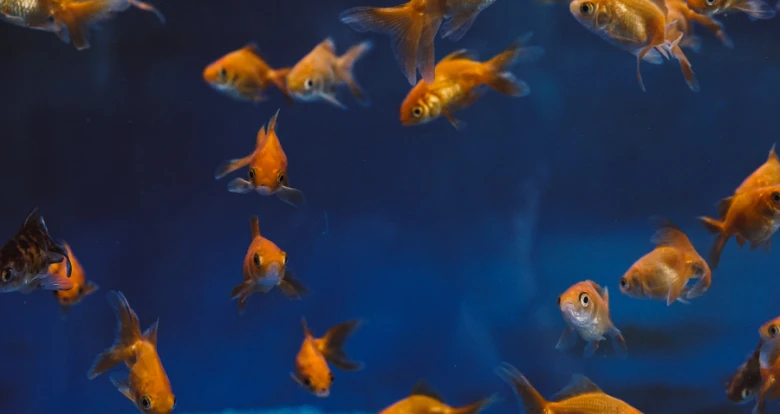
Hey fish enthusiasts! 🐠 Let’s play a game called “Keep the Fish Happy and Healthy.” It’s sort of like Monopoly, only instead of avoiding jail, we’re avoiding relapses!
The Importance of Continued Monitoring Post-Treatment
Firstly, post-treatment doesn’t mean it’s vacation time. Nope! Imagine you’ve just binge-watched the best series ever (which had a sick protagonist, by the way). Now, you’d always want to stay tuned for any special episodes, right? Similarly, keep a watchful eye on your goldfish. Check daily for anything unusual. Any changes in behavior, fin appearance, or even a slight off-coloration could be a sign that Mr. Columnaris is trying for a sneaky comeback tour.
Adjustments to Goldfish Environment and Routine for Sustained Health
Moving on, think of your goldfish’s tank as its mansion. After a rough patch, it’s essential to give it an upgrade. Here are some deluxe tips:
- Water Quality: Regularly check the pH, ammonia, nitrite, and nitrate levels. Maintaining optimal water parameters is like ensuring the aircon works in a penthouse suite. Essential!
- Décor & Layout: Create an environment that promotes both relaxation and exploration. Adding safe plants or toys can help. It’s akin to adding a home theater and a spa in our celebrity fish’s mansion.
- Diet & Nutrition: Serve gourmet meals! Well, in fishy terms, that means high-quality, nutritionally balanced pellets or flakes, supplemented with occasional treats like live or frozen food. They deserve the 5-star dining experience after what they’ve been through.
Recognizing and Addressing Potential Reinfections Early On
Lastly, Columnaris, like bad reality TV, can have reruns. To prevent a dreaded sequel, routinely inspect your goldfish. Is it swimming oddly? Does its skin seem off? If something seems fishy (pun absolutely intended), act swiftly. Consider consulting a vet or an expert aquarist for a quick check.
Alright, fish guardians, having navigated the post-treatment waters, we now journey into the enchanted forests of prevention. Because the best way to fight an old enemy? Stop it from returning in the first place! 🐟🛡🌲
An Ounce of Flexibacter Columnaris Prevention is Worth a Pound of Cure
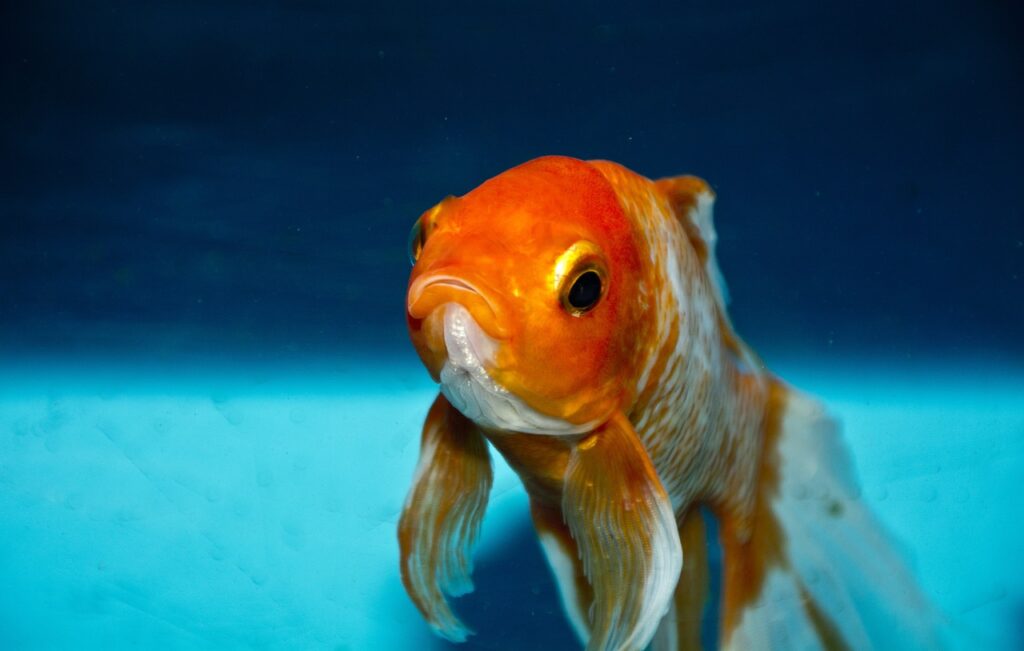
We’ve hacked into the enemy’s plan and decoded their maneuvers until now. But why wait to wage the war when you can avoid the battle altogether? Let’s throw on our preventive armor and delve into those proactive measures that keep Columnaris at bay.
Basic Hygiene Practices for Columnaris in Goldfish
Take a face-to-face with the most underrated yet powerful weapon in defeating diseases: hygiene. Just like washing your hands keeps germs away, maintaining basic tank hygiene keeps Flexibacter Columnaris away from your beloved finny friends. Regular cleaning of the tank, sterilizing the equipment, and routine water changes are your first line of defense. No bacteria, no problems. Easy peasy, fin-squeezy!
Let this be your golden mantra: Clean water equals happy goldfish. Keep that water pristine, and Columnaris won’t dare to blush in your goldfish’s neighborhood.
The Right Diet For Boosting Goldfish Immunity
You are what you eat. And so are your goldfish. They may not care about their waistline or indulge in comfort-eating, but their diet is the key to grand health and immunity. Variety is the spice of (goldfish) life. Mix up plant matter, protein-based food, and fish-friendly veggies to make them a banquet fit for aquatic kings.
A balanced, nutritious diet keeps their immune system robust and ready to fight off Flexibacter Columnaris. So, unleash your inner Jamie Oliver, and let’s get that gourmet goldfish menu ready!
As we close the lid on our prevention treasure chest, we’re about to dive into some deep waters filled with real-life tales. Up next, “Aquarist Accounts: Real Stories of Battling Flexibacter Columnaris” will shine a spotlight on the brave goldfish guardians who’ve faced this foe head-on. Prepare to be both enlightened and inspired!
Aquarist Accounts: Real Stories of Battling Flexibacter Columnaris in Goldfish

Lights, camera, action! 🎬 It’s time for some real-life tales from the deep – or well, from the fish tank. These are not your typical fisherman’s tales; they’re honest, heartfelt stories from goldfish owners who’ve locked fins with the notorious Flexibacter Columnaris. Grab your popcorn, because here come the aquarist anecdotes!
Personal Experiences from Goldfish Owners Who’ve Faced the Disease
Meet Timmy. Timmy is a die-hard goldfish fan. He has a goldfish named Goldie. Original, I know. When Goldie started to show signs of Flexibacter Columnaris, Timmy was more puzzled than a cat watching a laser pointer. He shared, “It was like watching a crime mystery unfold in my tank, and I was the detective!”
Samantha, another brave soul, recalled, “When Mr. Bubbles got sick, I felt like a fish out of water myself! I never knew how attached I was to my scaly friend until this sneaky disease showed up.”
The Challenges Encountered During Treatment
For most goldfish guardians, treating Flexibacter Columnaris was akin to that time they tried assembling IKEA furniture without the manual. The first challenge? Pinpointing what was wrong! As Gina recounted, “I had to turn into a part-time fish doctor, part-time water chemist, and full-time worrywart.”
Another aquarist, Rafael, added with a laugh, “Trying to catch my fish to check on it was like playing a game of hide-and-seek. And guess what? The fish always won.”
Outcomes, Both Successful and Unfortunate, and the Lessons Learned
While many stories had a happy ending, like Mark’s triumphant tale of his fish Finley’s full recovery, others had more somber tones. Lucy shared tearfully, “Despite all the care and treatments, my dear Swimmy didn’t make it. But it taught me the importance of preventive measures.”
But as Derek put it, “Every fish tale, good or bad, teaches us something new. And armed with that knowledge, we become better fish parents.”
And speaking of being better fish parents, prevention is truly the golden key. In the vast ocean of goldfish care, knowledge and awareness are our trusty lighthouses. So, as we bubble up to the surface, let’s bring everything together in a concluding splash, summarizing our golden insights for every fish enthusiast out there. 🐟💡📜
To Sum Up
Flexibacter Columnaris, while invisible to the naked eye, is a clear threat that can seriously affect the health of your beloved goldfish. Being watchful for the initial signs of infection and understanding the disease’s progression are key to combatting this microbial menace.
Understanding the lifecycle of Flexibacter Columnaris and how it permeates and disrupts your goldfish’s health is crucial. Equally important are awareness of the factors that make your pet susceptible, like poor water quality and stress, and proactive steps to improve such conditions.
Effective treatment options and maintaining water quality control goes a long way in ensuring the survival of your goldfish. Medication can certainly aid in this battle, but it’s merely one part of the strategy.
Lastly, prevention is truly the best route to health with an emphasis on basic hygiene and a proper diet to boost your goldfish’s immunity. Remember, an ounce of prevention is worth a pound of cure, especially when it comes to Flexibacter Columnaris.
Frequently Asked Questions (FAQ)
Question: What exactly is Flexibacter Columnaris Disease?
Answer: Flexibacter Columnaris, often referred to as ‘cotton wool disease’, is a common bacterial infection in goldfish marked by white, cotton-like patches on the skin signaling tissue damage.
Question: How do I identify the early symptoms of this disease in my goldfish?
Answer: Identifying symptoms could include lethargy, loss of appetite, breathing difficulties, and visible white patches or lesions on the body.
Question: How does Flexibacter Columnaris spread in my goldfish?
Answer: The disease spreads rapidly in dirty water, particularly when the immune system of the fish is already compromised due to stress or other illnesses.
Question: What are some of the factors that make my goldfish susceptible to Flexibacter Columnaris?
Answer: Poor water quality, overcrowded tanks, improper nutrition, and stress are common contributors to your goldfish’s susceptibility.
Question: How can I treat my goldfish if it contracts Flexibacter Columnaris?
Answer: Effective treatments could include antibiotics, cleaning the aquarium, and using water treatments specifically aimed at combating bacterial infections.
Question: What preventative measures can I take to protect my goldfish from this disease?
Answer: Maintaining good water quality, ensuring ample space for your fish, providing a balanced diet, and reducing stress can help prevent your goldfish from contracting the disease.

